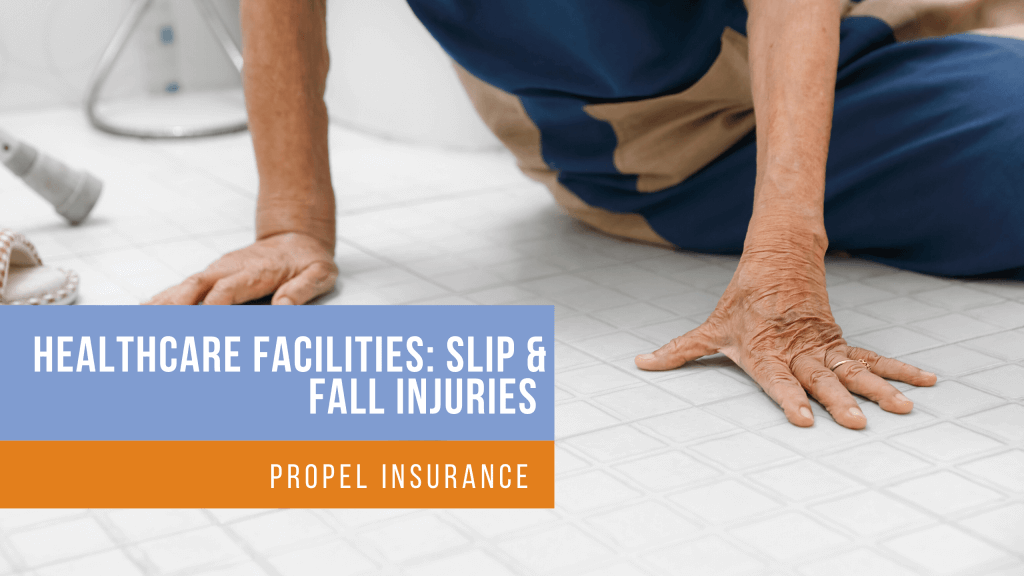Propel provides innovative insurance solutions to thousands of companies across the country. We make it our business to know your world inside and out.
Senior Care
Healthcare Facilities: Slip & Fall Injuries
Healthcare facilities provide medical and daily living care for patients and residents. With slip and fall injuries prevalent, how do these facilities prevent injury to both patients and staff?
In a study by the National Floor Safety Institute (NFSI), slips and falls represent the leading cause of emergency room visits with over 8 million annually. This number comprises 21.3% of total ER visits each year.
Over 60% of community-dwelling seniors will fall each year making slip and fall injuries the second leading cause of injury-related death for people aged 65 – 84 years, and the leading cause of injury-related death for those aged 85 and older.
The CDC reports that by 2020, the total direct and indirect costs of fall injuries for people over 65 will reach $67.7 billion.
With statistics like these, how do long term care facilities prevent such a prevalent risk? Preventing slip and fall injuries requires active involvement on the part of facility owners, managers and employees:
- Treat floors and stairs with slip-resistant coatings
- Require employees to wear shoes with slip-resistant soles
- Conduct regular facility audits to identify and correct trip hazards
- Remove or secure hazards such as loose rugs, electrical cords, long drapery, and plant stands
- Control moisture in areas of the facility knows for high humidity
- Use non-slip mats in the bathtub and on shower floors
- Purchase and use appropriate cleaning products to degrease kitchen areas
- Appropriately identify and silo off areas where cleanup has occurred
- Provide adequate lighting in hallways and stairwells
- Regularly repair damaged surfaces of walkways and parking areas
- Use water absorbent walk-off mats with beveled edges near entrances
- Install handrails in hallways and grab bars for the shower or tub
- Train staff to be mindful of patients and residents on medications that can have side effects of dizziness or drowsiness
- Keep resident items stored on easily accessible shelving to prevent the need for step stools
Even with the best of intentions slips and falls occur resulting in injury. In these cases it is best to have adequate insurance coverage to protect both the facility, employees, and patients.


